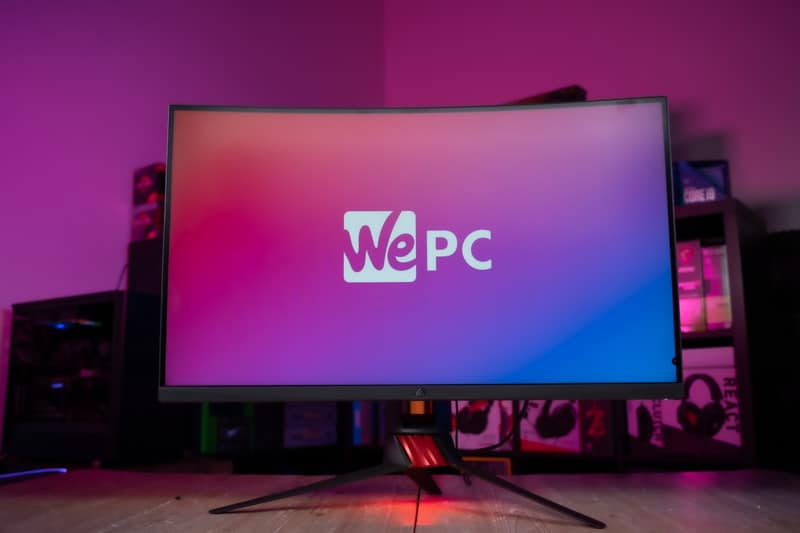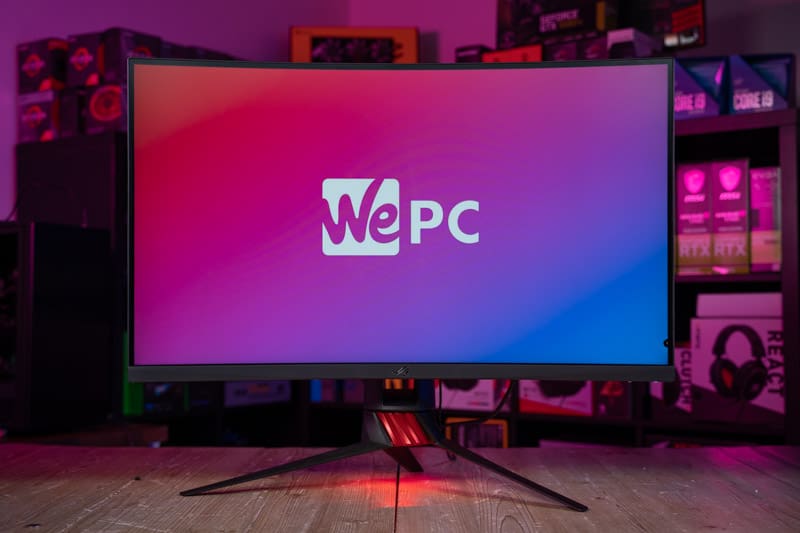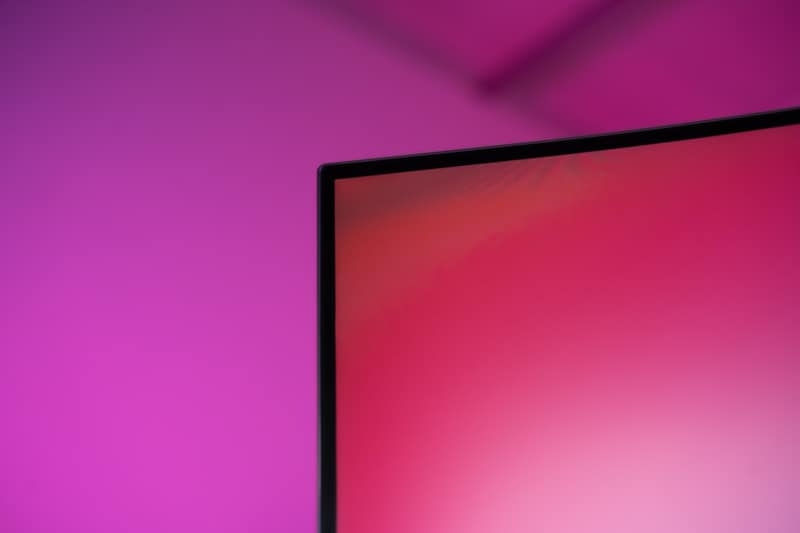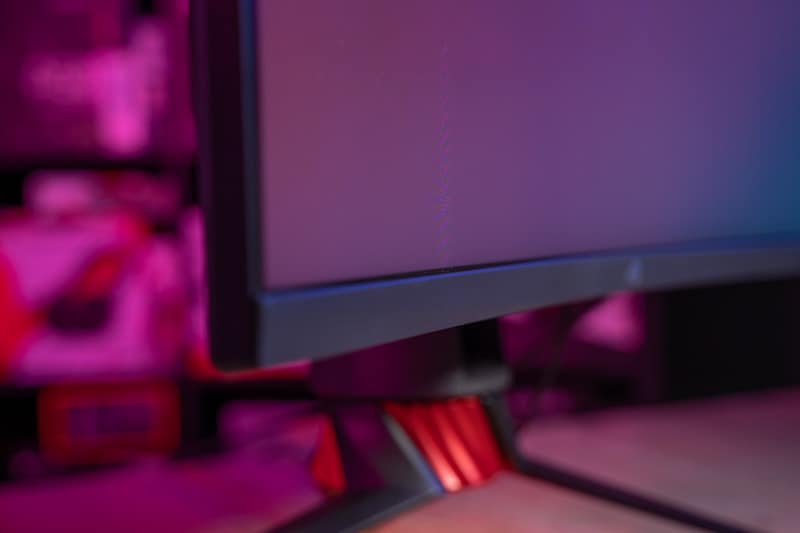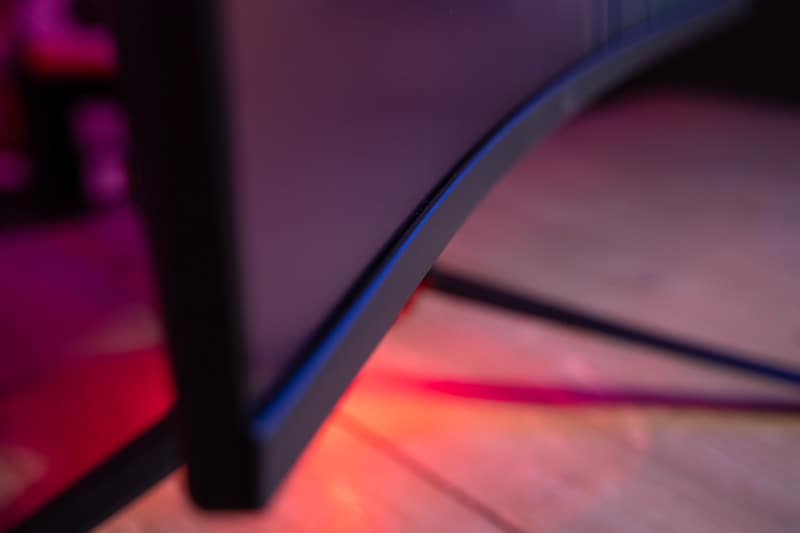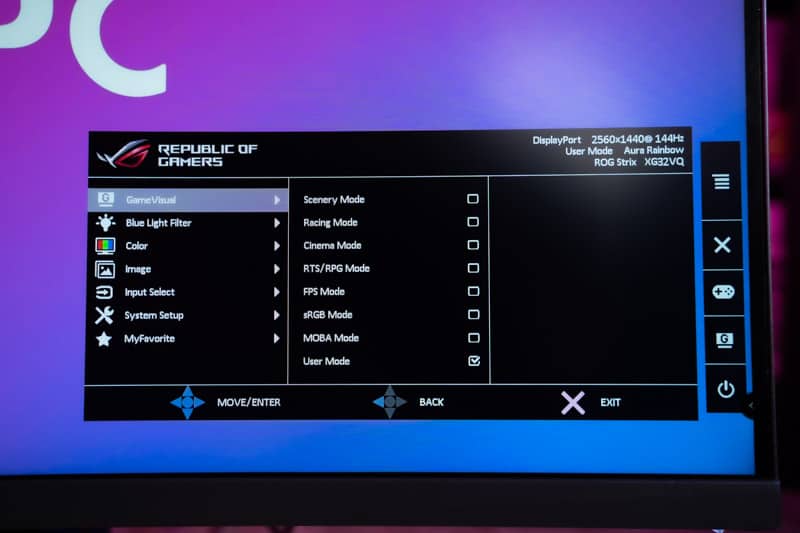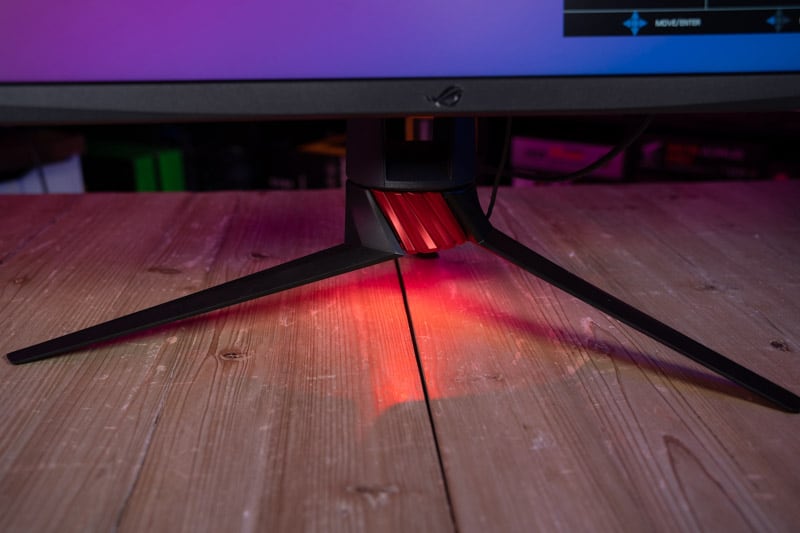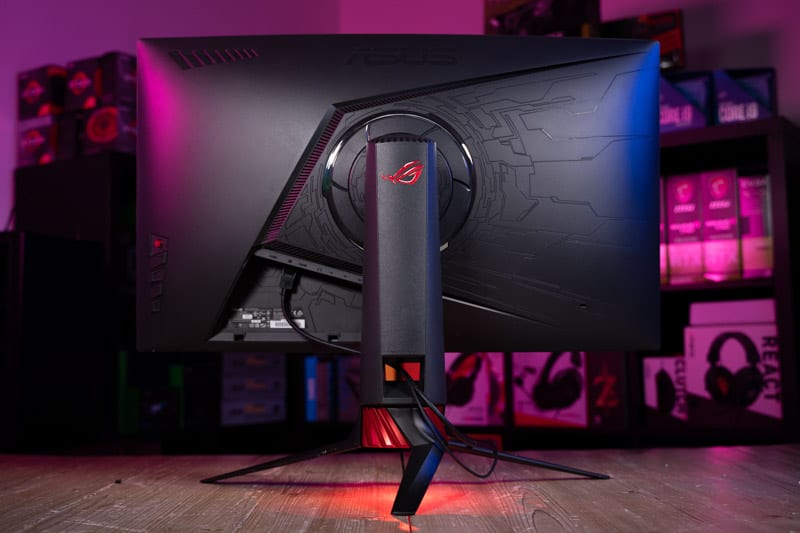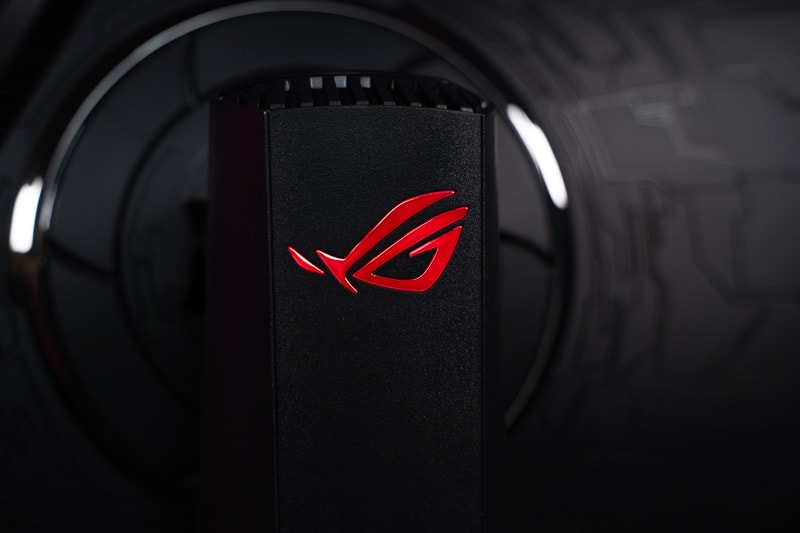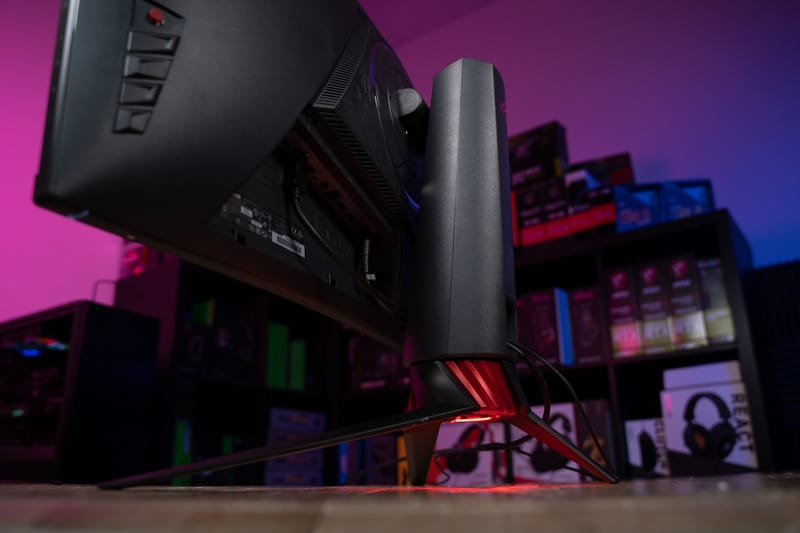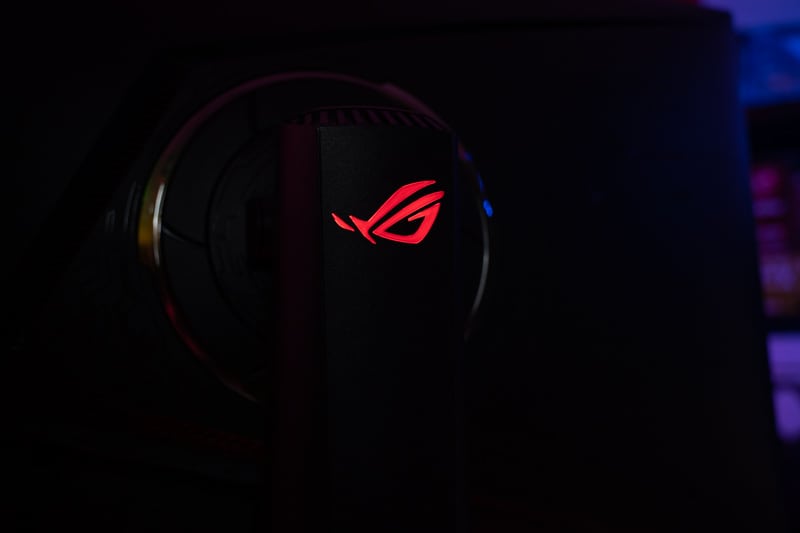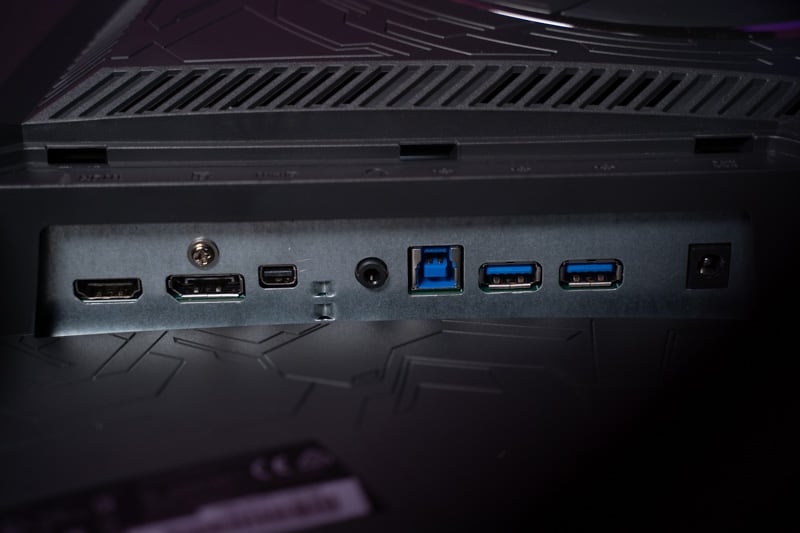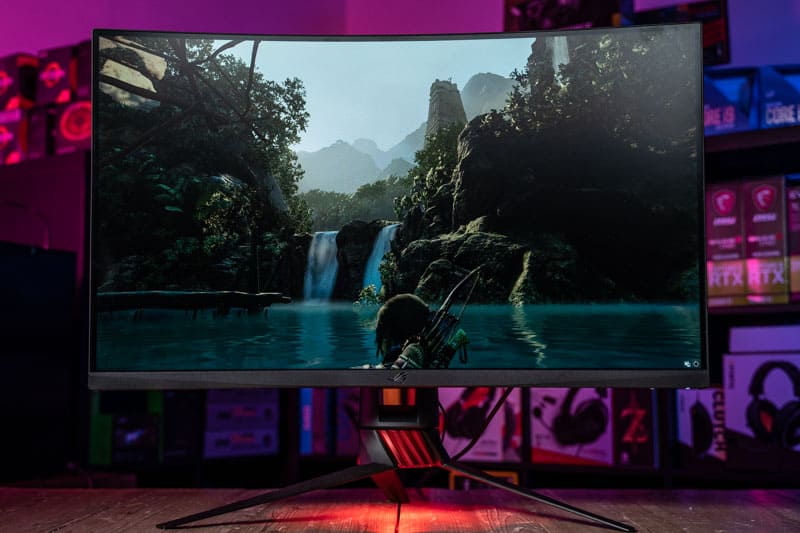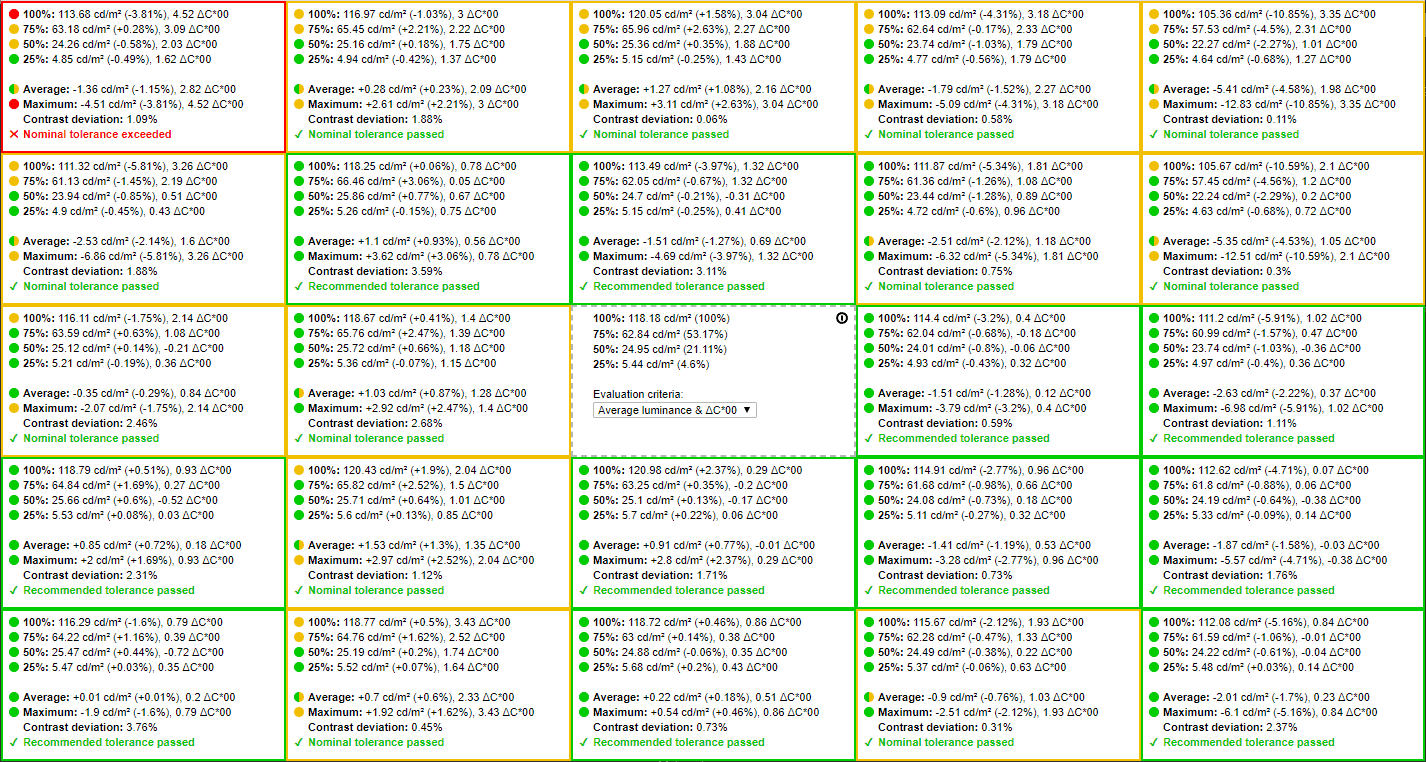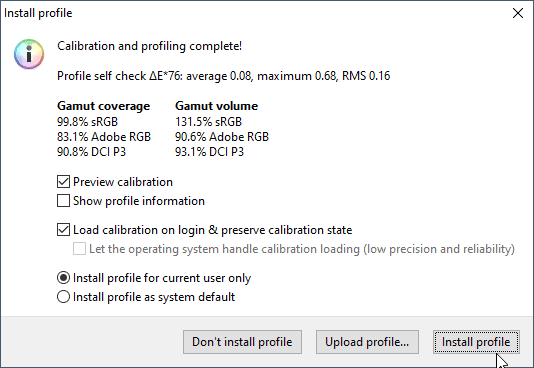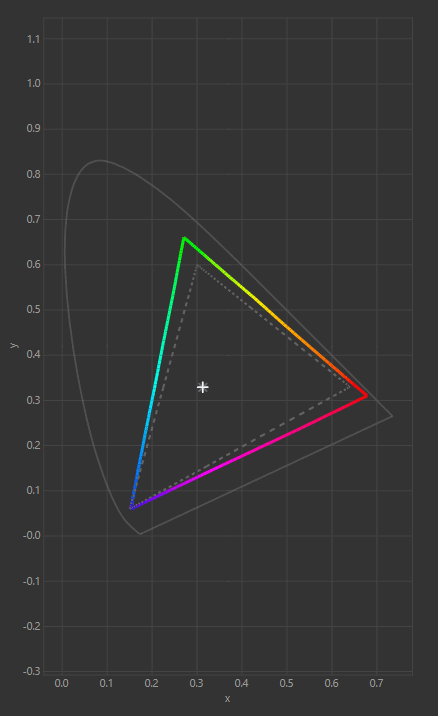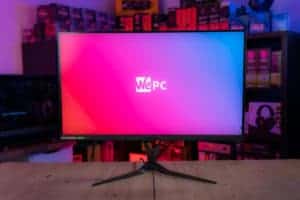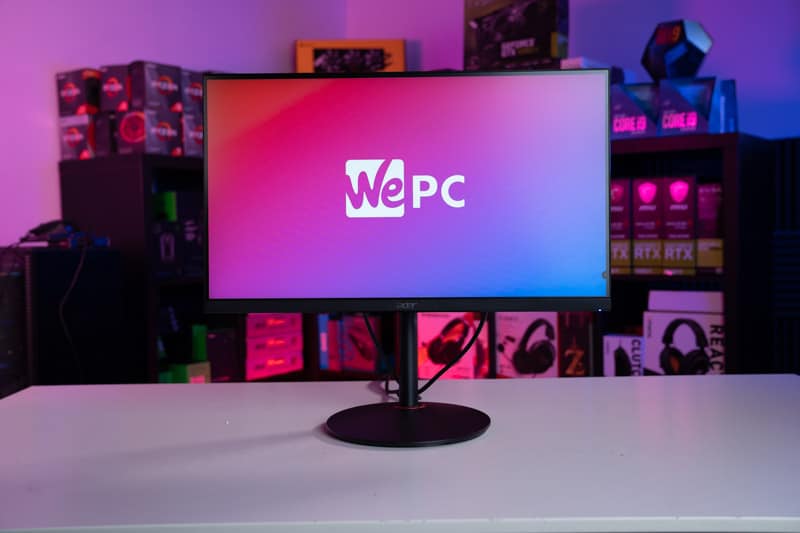ASUS XG32VQ Monitor Review
We see how ASUS's 1800R curved monitor stacks up against the other 1440p alternatives in today's market
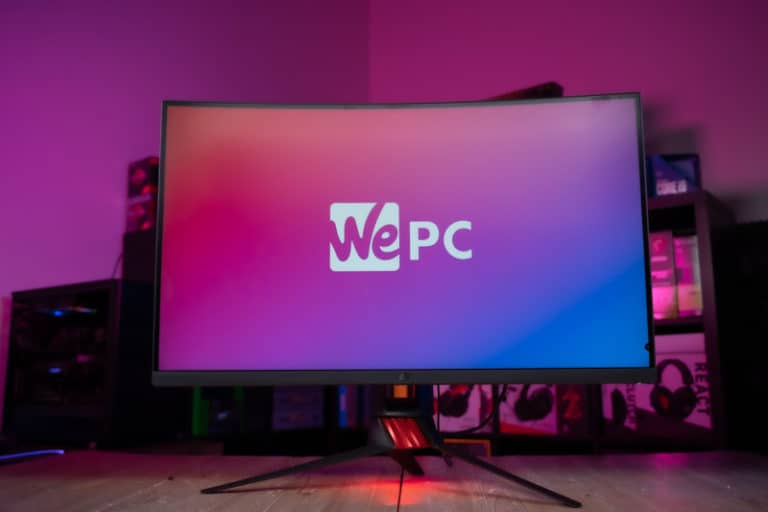
Whilst curved monitors aren’t everyone’s cup of tea, there’s no denying the immersive value they bring to gaming and general entertainment scenarios. The ROG STRIX XG32VQ is one of ASUS’s larger curved monitors, scaling up to an impressive 31.5″ and sporting a 1800R curvature. Alongside its eye-catching display, the XG32VQ also comes equipped with a 1440p screen resolution, 144Hz refresh rate, and excellent color coverage – making this one of the best curved gaming monitors on today’s shelves.
In the following guide, we’ll be putting the ASUS XG32VQ through its paces to see how it stacks up in a variety of different scenarios – including picture quality, color accuracy, ergonomics, build quality, and gaming performance.
So, with plenty to get through, let’s waste no further time and dive straight into it!

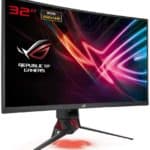
ASUS ROG STRIX XG32VQ: Specifications
- Immersive 1800R curve
- Large Color Gamut
- Great picture quality
- Deep blacks
- Response time isn't the best
- Leans on the expensive side
What's In The Box
Like many of the premium ASUS monitors, the XG32VQ comes in a large box that showcases plenty of marketing material on the exterior – including some of the monitor’s major features.
Inside the box, the monitor comes almost fully assembled, with only the base of the stand requiring construction. The base of the stand screws into the monitor via a simple thumbscrew found on the underside of the base.
Two large styrofoam pads are used to ensure no damage occurs during transit.
Inside the ASUS ROG STRIX XG32VQ box, you will find the following items:
- ASUS ROG STRIX XG32VQ monitor
- DisplayPort Cable
- HDMI cable
- Powerpack + cable
- Quick Start Guide
- Warranty
Design
With specifications out the way, let’s take a closer look at the build quality, design, and mechanical features this monitor comes equipped with.
Design
ASUS are no strangers to designing fantastic-looking monitors, and the XG32VQ is no exception. The first thing you notice about this monitor is how premium it looks. The 32-inch screen is characterized by its large 1800R curve and pairs nicely with thin, dual-stage bezels that help create a true feeling of immersion. The bottom bezel is the larger of the three and showcases a simple ROG logo that’s finished with a chrome styling. The monitor does fall onto the chunky side, but that’s often the case with large panels that have big curves.
The base of the stand is potentially the most striking aspect of this monitor’s design, offering ROG’s ‘gamey’ traits that have been such a hit in the past. The stand has a triad design with an off V-shape that looks superb. Splashes of red can be found in the base of the stand alongside a light signature projection feature that beams the ROG logo onto your desk.
Disclaimer: The ROG perspex slide was broken on the model we received.
At the rear of the stand, users can utilize a small cutout for cable management – above which, more ROG-branded RGB lighting can be found. The rear of the monitor itself is fairly basic until you get to the centre, where another RGB zone can be found alongside some ‘gamey’ etchings.
Four buttons and a joystick can be found at the bottom right-hand corner of the monitor for OSD navigation – finished with a design that fits nicely into this panel’s overall aesthetic. ASUS’s logo can be found at the top of the monitor, finishing its look off nicely.
Build Quality
As always, we put the XG32VQ through a variety of robustness tests to see how it stacked up from a build quality standpoint. Thankfully, there weren’t too many issues to report. The monitor felt pretty sturdy and didn’t show any signs of poor build practice. The panel has a strong coating, offering a 3H hardness for additional protection at the front. There are no obvious gaps either, something that is often found at the front of a curved monitor – everything here feels very well made.
The base of the stand is constructed mainly of metal, but does have some plastic additions too. For me, the stand does an extremely good job of holding this monitor in place – especially when you consider its size. I experienced little creaking or flex when testing the rest of this monitor, leaving me in no doubt that the XG32VQ has been made to the same high standards as most other ASUS panels.
Panel Coating
As mentioned above, the XG32VQ comes to the table boasting an anti-glare panel coating that’s finished in matte and with a 3H hardness. We see this coating used in many of today’s monitors, offering up very good mitigation of both natural and manmade light sources.
Again, fingerprints can be a little problematic with this monitor, so be aware if you are sensitive to this kind of thing.
Bezels
The XG32VQ offers dual-stage bezels that are slender when you consider its size – albeit not the thinnest we’ve ever tested. Top and side bezels measure in at 8-9mm, whilst the bottom bezel has a more robust 22mm profile. Despite these not being the smallest, they’re still extremely thin when compared to the size of the monitor. This, as we always say, helps to create better levels of immersion when gaming or watching video content.
Stand
ASUS has equipped the XG32VQ with a very versatile stand that brings height, tilt, and swivel functionality to the table. As this monitor is curved, chances are, you might need to maneuver it at some stage. Fortunately, the stand is both versatile and robust, holding it in place firmly once you’ve found the perfect viewing angle.
Below are the exact specifications of the stand:
- Forward Tilt – 5 degrees
- Backward Tilt – 20 degrees
- Left Swivel – 50 degrees
- Right Swivel – 50 degrees
- Pivot – N/A
- Height – 100mm


Inputs
Inputs for this monitor are found at the rear and cables are inserted in a vertical fashion, as per usual. ASUS has ensured easy access to the inputs by designing the cutout away from the stand itself.
Inputs include several USB ports, a number of display inputs (HDMI 1.2/DisplayPort 1.2), and audio options as well. This monitor does not offer HDMI 2.1 support.
OSD
The OSD (on-screen display) for the ASUS XG32VQ is extremely easy to use and self-intuitive. It’s the same OSD that we’ve seen used over numerous ROG monitors, with each exceeding our expectations for ease of use.
Inside the OSD, users have access to a number of different settings which span picture quality, color accuracy, image responsiveness. Alongside this, there are a tonne of color presets and modes that are custom-designed for that scenario.
Once you’ve found your desired settings, you can save them to one of the custom profiles within the OSD.
Color Accuracy & Picture Quality
Great colors and excellent picture quality are two of the main factors that help create immersion while your gaming. Despite the importance of good color, monitor manufacturers don’t always calibrate the color of their panels to what is deemed accurate within specific color spectrums – sRGB/Rec.709 for example.
We like to test each monitor for color reproduction to see how they would perform in color-accurate scenarios.
Here are the results for the ASUS ROG STRIX XG32VQ:
| Preset | White Point | Black Depth | Contrast Ratio | Average ΔE*00 | Gamma |
|---|---|---|---|---|---|
| IDEAL | 6500K | 0.00cd/m² | Infinite | 0.00 | 2.2 |
| Out The Box | 7654K | 0.0971 cd/m² | 2722.2:1 | 2.65 | 2.25 |
| sRGB | 7130K | 0.098 cd/m² | 1831:1 | 2.78 | 2.22 |
Like always, we began the color accuracy performance section by running a simple test on the XG32VQ right out of the box. For this monitor, Racing mode was set with a brightness of 265 candelas – more than the recommended level for daytime usage.
The colors out of the box for the XG32VQ weren’t great – especially if you’re looking for a monitor that is ready for editing. With a white balance of 7654K, the color of this preset definitely had a blueish hue. That said, black depth came in at 0.097 which was extremely good for dark scenes in movies or games. A contrast ratio of 2722:1 was recorded alongside a gamma of 2.25. Overall deltaE was 2.65, making this unsuitable for editing.
We ran the built-in sRGB simulation profile next, expecting a large boost in color accuracy. However, that wasn’t the case for this monitor. As you can see from the table above, white point dropped a little and black depth stayed pretty much the same. Contrast ratio took a hit down to 1831:1 and gamma was 2.22. More importantly, however, was the increase in average deltaE. It rose to a confusing 2.78, making it worse than the out the box settings.
There was a tonne of other presets inside the monitor’s OSD, but few offered acccuracy that was close to the sRGB spectrum. That said, we did take some notes on the preset which are below:
MOBA – Colors are incredibly washed out – image almost looks black and white with only hints of warmer tones.
Cinema – Cinema mode offers a lot of vibrance and what feels like a gamma-rich profile. Contrast seems strong and darks are deep.
FPS – Colors are more washed out when compared to those of Cinema. This preset is closer to sRGB, with a warmer tone overall.
Scenary – Scenary is somewhere between FPS and Cinema, offering good vibrance in the warmer tones – with less emphasis on deep blacks.
After testing the various presets, I wasted no time and decided to calibrate the panel, recording color gamut, panel uniformity, and overall color accuracy.
We chose the ‘User mode’ color settings and altered the RGB to 100/94/87. For users that like to save multiple presets, the ASUS XG32VQ offers 4 custom profiles that are saved to the onboard memory of the monitor.
Here are the results:
| Preset | White Point | Black Depth | Contrast Ratio | Average ΔE*00 | Maximum ΔE*00 | Gamma |
|---|---|---|---|---|---|---|
| IDEAL | 6500K | 0.00cd/m² | Infinite | 0.00 | 0.00 | 2.2 |
| Calibrated Profile | 6514K | 0.0724 cd/m² | 1632.9:1 | 0.31 | 1.95 | 2.22 |
After calibration, the color accuracy of this monitor was much better. As you can see from the table above, the white point was now a near-perfect 6514K, alongside an equally impressive 0.072 black depth. Whilst contrast ratio did take a small dip, the average deltaE improved massively, now offering a 0.31 average – with a high of 1.95. Gamma was still 2.22.
Despite the XG32VQ’s poor accuracy out the box, you are able to get true colors if you want to invest in a colorimeter. Whilst this will set you back a bit, it’ll allow you to utilize this impressive monitor for color-accurate scenarios.
Panel Uniformity
Panel uniformity is a test we run to check how uniform the luminance and color is across the entirety of the screen. During this test, the center square is used as the reference space. Every other square is then tested to see how far it differentiates from the reference.
In an ideal world, we want every square to be green, meaning it hasn’t broken the differential threshold – something we can set at the start of the test.
Note: results will differ from panel to panel.
Panel uniformity for the XG32VQ was a little hit and miss for me personally. Whilst it didn’t show that many red regions, it still only managed to score a medium for panel luminance and color accuracy uniformity. The top left-hand corner of the panel was the worst quadrant tested, showcasing a 2.82 average deviation. This is often the case with panels that showcase poor uniformity, the edges are normally where poor accuracy is found.
There are plenty of green quadrants on this monitor, with the right-hand side besting the left. Overall, the panel uniformity isn’t the best, but it’s not the worst either.
Viewing Angles
The viewing angles on this monitor aren’t actually as bad as you might expect. That’s mainly thanks to the SVA panel this monitor comes equipped with – offering better viewing angles over the more generic VA alternative. That being said, you still get some mild color shift at around 30-40 degrees.


Color Gamut
As part of the calibration process, the DisplayCal will give an accurate measurement of the color gamut the monitor can provide. Below are the results of the color gamut test:
Looking at the color coverage of this monitor, we were pretty impressed overall. Whilst it doesn’t showcase a huge gamut over the sRGB spectrum (131%), it’s still more than enough to provide a good 90% of the DCI-P3 spectrum. That translates to a 99.8% sRGB and 83.1% Adobe RGB coverage – excellent for reproducing realistic colors and vibrance.
Looking at the physical color gamut graph, you can see where the XG32VQ’s gamut exceeds the sRGB spectrum – shown by the dotted line in the above graphic.
Whilst this monitor isn’t the most accurate thing on the market, it still offers a good color gamut that helps to reproduce realistic colors for gaming and video content.
Maximum And Minimum Brightness
We ended the color accuracy and picture quality testing by checking the maximum brightness, minimum brightness, and 120 candelas points on this panel. The results are below:
| Brightness | Candelas |
|---|---|
| 100% Brightness | 261cd/m² |
| 0% Brightness | 50cd/m² |
| 30 Brightness | 120 cd/m² |
Calibrated Profile
For those who want to use our calibrated color profile, you will find a link below where you can download the zip file.
ASUS XG32VQ: Gaming Performance
With color accuracy out of the way, it’s time to put the ASUS ROG STRIX XG32VQ through a number of different gaming scenarios to see how it stacks up in pixel response, input lag, and overall responsiveness. Let’s dive straight into it!
The XG32VQ offered a hit-and-miss experience when it came to gaming. Whilst it excelled in single-player titles, it didn’t offer nearly as much edge in competitive titles. When the in-game frame rate matched the refresh rate of the monitor, games had a particularly lucid feel that looked fantastic. Games like CS:GO, COD, and PUBG all felt very responsive, with no feeling of lag in between mouse movement and on-screen action. The 144Hz refresh rate offers 2.4 times the data of a 60hz monitor, resulting in a clear and obvious difference between the two technologies when viewed side by side. This quick refresh rate would also reduce the perceived blur quite dramatically, allowing you to focus more clearly on fast-moving targets and enemies.
However, it wasn’t all plain sailing. We experienced some fairly obvious downfalls when it came to pixel response time. As mentioned in the specifications, the XG32VQ only comes with a 4ms GTG response time – best case scenario. In reality, the response time of this monitor, over all color transitions, was much slower. This was fairly obvious in some games where smearing was quite apparent and sometimes off-putting. Luckily, the monitor does come with some Over Drive settings – OD in the OSD – allowing you to choose through 5 varying levels. Playing around with the numerous OD settings did have a dramatic effect on smearing, reducing it in some cases quite exponentially. However, and like most Over Drive technologies, using it at more intense levels would lead to pretty aggressive overshoot – often seen in competitive games. Unfortunately, this is one of the main reasons why it didn’t excel in competitive titles. You have to choose between smearing and overshoot – something no competitive player wants to do. Furthermore, with a curved screen, the XG32VQ isn’t optimized for this kind of gameplay.
That said, the 1440p screen resolution did offer excellent picture clarity – pairing nicely with a wide color gamut for color realism. The overall immersion that this monitor provided in single-player titles was very high. The 1800R curve provides a natural viewing experience that matches the curvature of your eye, lessening the strain it puts on you overall. Pair this with the thin dual-stage bezels, large 32-inch screen, and excellent color recreation – and you have a very efficient gaming monitor.
Remember, if you’re looking at this for a potential upgrade from your 1080p screen, be prepared to take a decent drop in overall gaming performance.
Final Thoughts
So, there you have it, our comprehensive review of the ASUS ROG STRIX XG32VQ – a large-screen curved gaming monitor that tries to pair fast response with high levels of immersion.
The only question left to answer is, does the XG32VQ showcase good value for money? And for me, that’s a tough one.
The XG32VQ is a solid 32-inch gaming monitor that offers an immersive 1800R curve alongside a high 144hz refresh rate and 4ms GTG response time. The SVA panel at its heart showcases improved viewing angles over VA alternatives, alongside great color accuracy too. The XG32VQ offered deep blacks and bright whites without an HDR certification. Furthermore, a wide color gamut allows this monitor to recreate a wider range of colors, again adding to the overall levels of immersion it offers.
However, with poor pixel response time in certain color transitions that lead to heavy smearing, using this monitor for competitive titles isn’t ideal. Trying to counterbalance this with pixel response boost (Over Drive), would also lead to obvious overshoot. For most use cases, this monitor is well priced, but not a complete bargain.


WePC is reader-supported. When you buy through links on our site, we may earn an affiliate commission. Prices subject to change. Learn more

